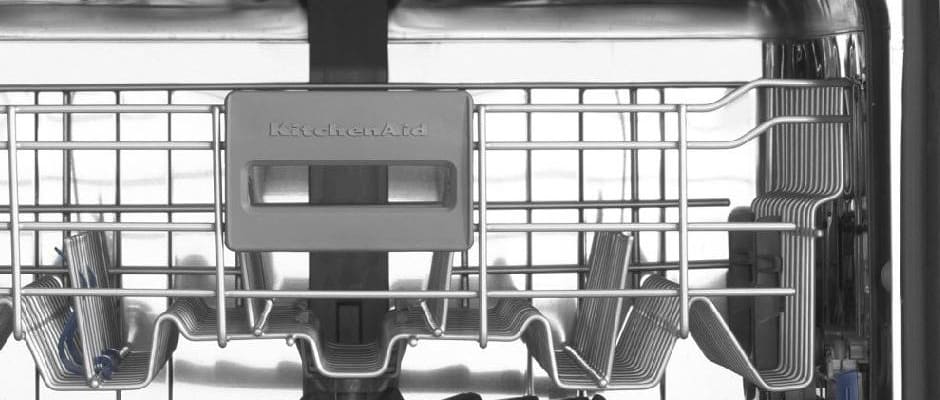Pros
Cons
Introduction
Front
{{section_header}}{{section.name}}{{/section_header}}
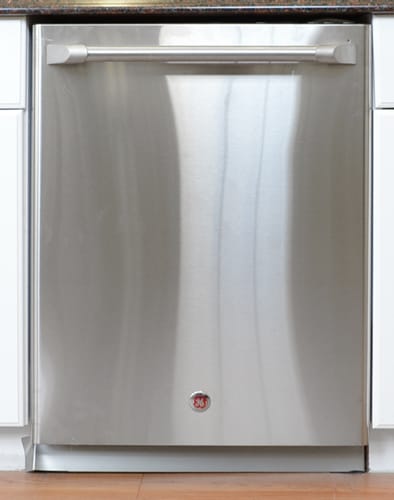
The front of the GE CDWT980VSS.
Finish
{{section_header}}{{section.name}}{{/section_header}}

Controls
{{section_header}}{{section.name}}{{/section_header}}
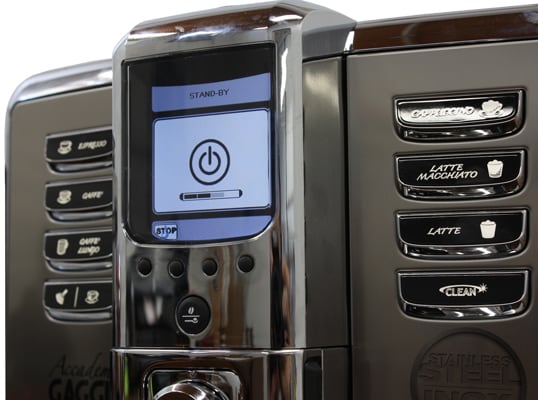
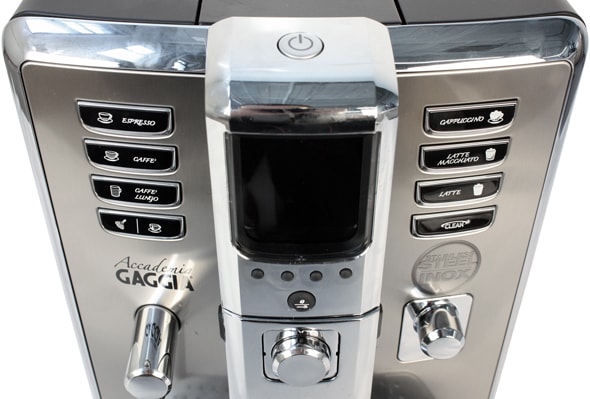
Interior
{{section_header}}{{section.name}}{{/section_header}}
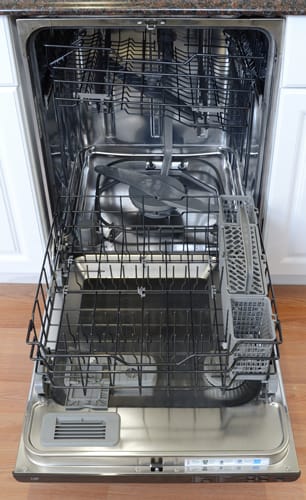
The CDWT980VSS with door open.
Top Rack
{{section_header}}{{section.name}}{{/section_header}}
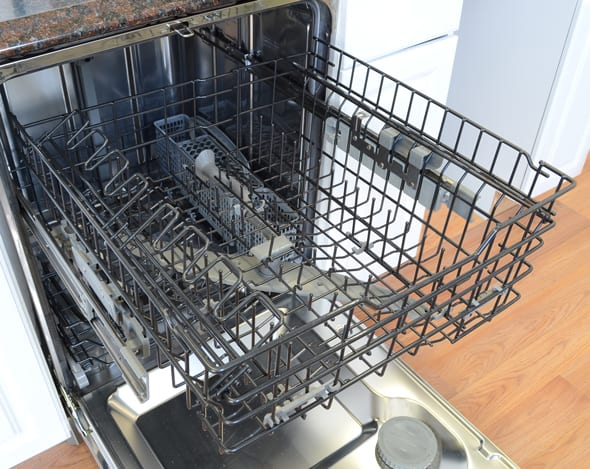
The top rack of the CDWT980VSS.
Bottom Rack
{{section_header}}{{section.name}}{{/section_header}}
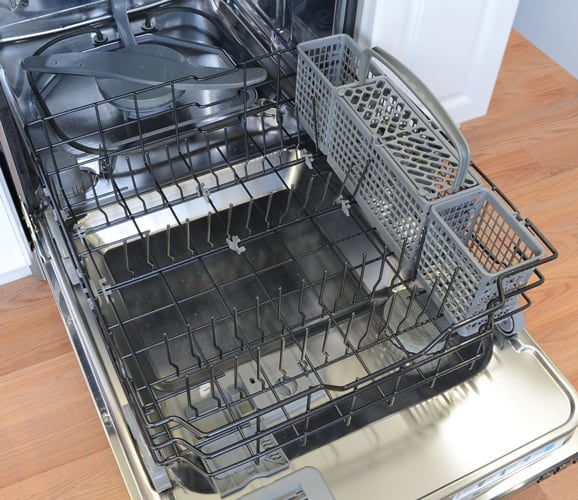
The bottom rack of the CDWT980VSS.
Cutlery Basket
{{section_header}}{{section.name}}{{/section_header}}
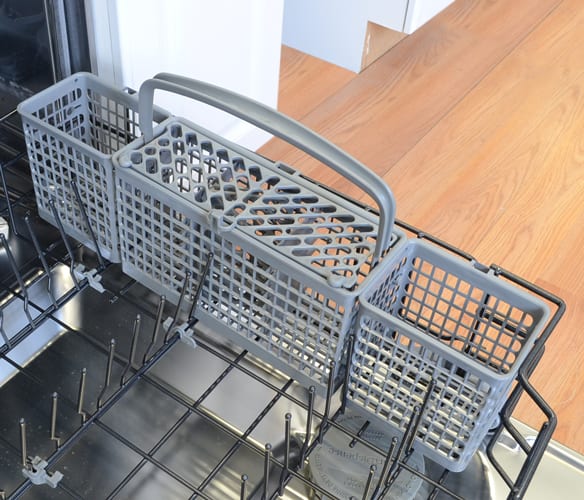
The CDWT980VSS cutlery basket.
Electricity Use
{{section_header}}{{section.name}}{{/section_header}}
Most of the energy used by the {{product.name}} is for heating up cold water and drying dishes with an internal heating element. About 80 percent of the cost of each cycle will be reflected on your electric bill.
Water Use
{{section_header}}{{section.name}}{{/section_header}}
The {{product.name}}'s normal cycle uses a lot more water than average. However, its heavy and quick cycles use less water than most other dishwashers out there.
Yearly Running Cost
{{section_header}}{{section.name}}{{/section_header}}
A year with the {{product.name}} should set you back a combined total of $37.76. That's assuming that 50 percent of your washes are normal, 25 percent are light and 25 percent are heavy. Your mileage may vary.
{{ attachments(50fc5208bd02862d77000819)
Washing Speed
{{section_header}}{{section.name}}{{/section_header}}
On the normal cycle, the {{product.model}} took a whopping 3:09 to complete a cycle. The heavy duty cycle took only ten minutes more. That's almost twice as long as similar models.
{{ attachments(510c25da6e26723364000531)
Washing Performance
{{section_header}}{{section.name}}{{/section_header}}
For your time, you at least get extremely clean dishes. This KitchenAid tackled stains and baked-on foods that other washers couldn't touch.
{{ attachments(50fc5201bd0286ac750007b0)
Quick Wash Cycle
{{section_header}}{{section.name}}{{/section_header}}
KitchenAid refers to their quick cycle as the "1 Hour Wash." More accurately, the button should read "1:33 Wash," because that's how long it took when the heated dry option was also selected. The {{product.model}} struggled to get baked-on meat and spinach off plates, though it had no problems with more lightly soiled dishes.
On other cycles, most food debris was whisked through the washer's drain hose in a cascade of dishwater. On the quick cycle, however, some food remained concentrated around the heating element used for drying dishes, effectively cooking the waste food. The odor was unpleasant, and cleaning the food off the heating element was difficult.
{{ attachments(50fc5201bd02862aee0007b2)
Normal Wash Cycle
{{section_header}}{{section.name}}{{/section_header}}
Most people will use the normal cycle for the majority of washes. They won't be disappointed with the {{product.name}}, which left most dishes entirely clean. It did struggle with dried spinach, but didn't redistribute waste food onto other plates like some other dishwashers we've tested.
{{ attachments(50fc5201bd0286cad70007b6)
Heavy/Pots & Pans Wash Cycle
{{section_header}}{{section.name}}{{/section_header}}
Aside from some trouble washing baked-on oatmeal and cheese from bowls, the {{product.name}} had no trouble cleaning even the toughest dirty dishes on the heavy duty cycle. Even a filthy lasagna pan emerged spotless, though some of the baked-on pasta remained at the bottom of the dishwasher.
{{ attachments(50fc5201bd028690490007b4)
Washing Cycles
{{section_header}}{{section.name}}{{/section_header}}
The usual suspect washes are present on the {{product.name}}: Normal, quick and heavy duty. There's no option for an "automatic" or load-sensing wash, like those found on some more expensive units.
Customization
{{section_header}}{{section.name}}{{/section_header}}
There are no options to build a customized wash cycle, nor is there an automatic load sensing wash.

Additional Wash Options
{{section_header}}{{section.name}}{{/section_header}}
To the preset washes, the user can select a heated dry, a high-temperature scrub cycle or a rinse only for dusty dishes.

Capacity
{{section_header}}{{section.name}}{{/section_header}}
We found that the {{product.name}} could hold up to eight place settings plus serving dishes, which is a little below average for a dishwasher. The top rack got cramped quickly, and the bottom rack's ability to hold more large plates was hampered by a third row which seemed suitable only for holding saucers.
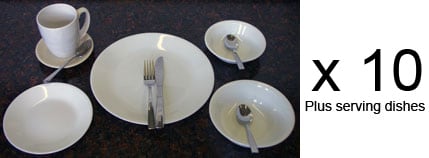
Top Rack
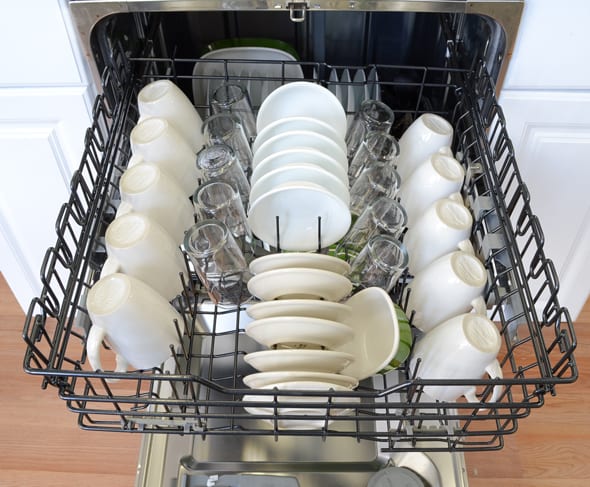
Bottom Rack
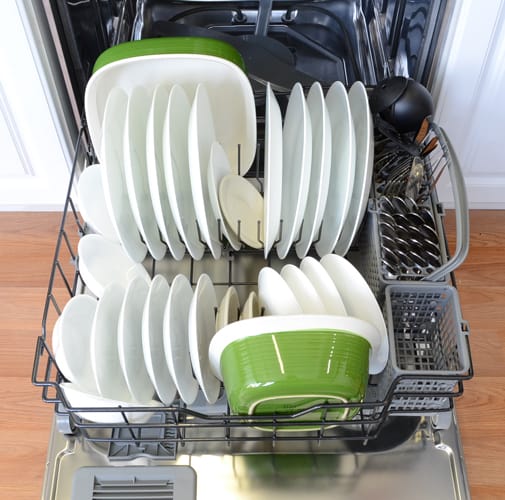
Wash Arms & Filters
{{section_header}}{{section.name}}{{/section_header}}
The {{product.name}} only has two washers with four arms -- one for the top rack and one for the bottom.
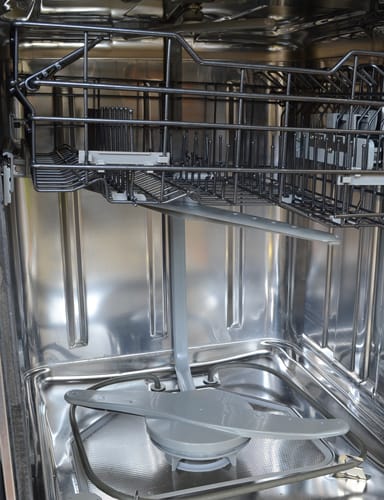
The CDWT980VSS wash arms.
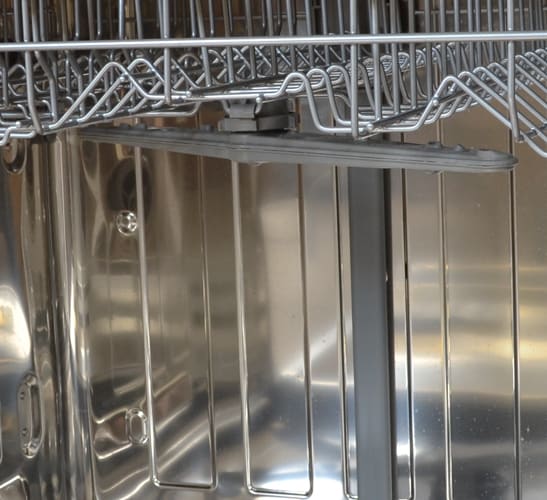
The DW 14140 upper wash arm
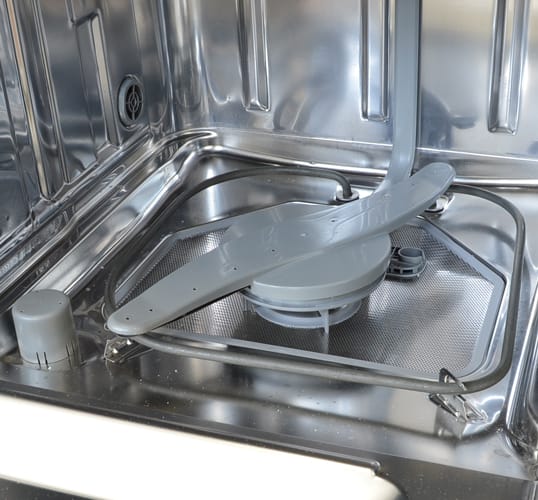
The CDWT980VSS filter.
Lower Dish Rack
{{section_header}}{{section.name}}{{/section_header}}
The bottom rack has rows of straight-up tines, and the rearmost row can be angled or put down entirely. There's not much free space, which means its hard to include larger serving bowls and dishes along with the usual wash.

The bottom rack of the CDWT980VSS.
Upper Dish Rack
{{section_header}}{{section.name}}{{/section_header}}
Up top, all tines are fixed. They're spaced well enough to fit most bowls, though oddly-shaped glasses and mugs may be difficult to fit on top of angled tines.

The top rack of the CDWT980VSS.
Cutlery Holder
{{section_header}}{{section.name}}{{/section_header}}
The cutlery holder is a wide open basket. Its two pieces can be joined together in the middle, or placed separately. The basket is removable, but there's only one place in the bottom rack where it fits.

The CDWT980VSS cutlery basket.
Detergent Dispenser
{{section_header}}{{section.name}}{{/section_header}}
A detergent dispenser sits next to a rinse aid reservoir.
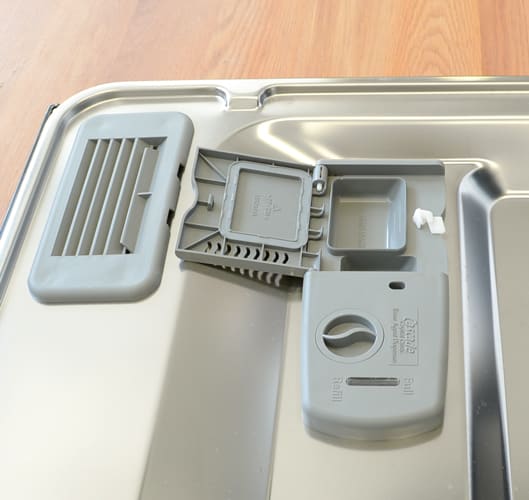
The CDWT980VSS detergent dispenser.
Ease of Use
{{section_header}}{{section.name}}{{/section_header}}
This is a very easy to use dishwasher. Racks slide easily, the heavy door opens with a gentle pull and racks don't sag even when full with dishes.
Noise
{{section_header}}{{section.name}}{{/section_header}}
The {{product.name}} is a very quiet dishwasher. It barely made a growl while cleaning, even when filling with water. Unless you were attempting to meditate, you couldn't possibly be bothered by this washer.
Controls
{{section_header}}{{section.name}}{{/section_header}}
The {{product.name}}'s controls are located on top of the door. That gives the washer a clean look, but makes the controls unusable when the door is closed.


Efficiency
{{section_header}}{{section.name}}{{/section_header}}
The {{product.name}} will cost you around $37.76 to run each year. Stick to the quick and heavy duty cycles, or shut off the heated drying function, and that number will be even lower.
Washing Performance
{{section_header}}{{section.name}}{{/section_header}}
Though the {{product.name}} did a good job getting used food and baked-on stains off dishes — especially during the heavy duty cycle — it took a long time to do so. The very effective heavy duty cycle took three and a half hours to work its magic.
Features
{{section_header}}{{section.name}}{{/section_header}}
There aren't any special features on the {{product.name}}, though it does have rinse only and high-temperature scrubbing options that can be added to existing cycles.
Meet the tester
Keith was the Editor in Chief of Reviewed's appliance and automotive sites. His work has appeared in publications such as Wired, Car & Driver, and CityLab.
Checking our work.
Our team is here to help you buy the best stuff and love what you own. Our writers, editors, and experts obsess over the products we cover to make sure you're confident and satisfied. Have a different opinion about something we recommend? Email us and we'll compare notes.
Shoot us an email